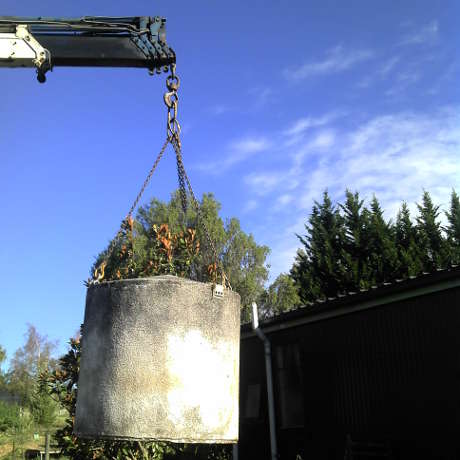Rainwater harvesting



When we took over our place in 2009 the rain that fell on the house roof was collected from the 3 down spouts in 200 litre drums which, when full, simply overflowed onto the ground. Perhaps this was just part of an unfinished system but it seemed silly to me.
Some time after moving in I modified the system to direct water from the down spouts to a small pond and an upper swale to better distribute it into the surrounding landscape. While this was an improvement it made sense to be keeping back some of that good fresh clean drinkable rainwater in the case of emergencies. So, finally I got a tank and included it into the system.
The roof has 3 catchment areas that drain to each of the down spouts. The lowest (and smallest) of which goes directly to a small pond where it refreshes the goldfish water.
When rain falls on the main roof area (indicated in orange) it comes out of the gutter and fills a vertical section of spouting with a small tap on the bottom. This is the first flush diverter which allows the first 10 litres or so to bypass the tank since this is the water that would have the most bird droppings and dust in it.
Once the diverter is full the water spills over and heads into the concrete tank where it enters via the top and slowly fills up. The tank overflow is configured in such a way that water is drawn out from the bottom of the tank in such a way as to gradually 'vacuum' sediment off the floor of the tank. This is achieved by running a loop of perforated pipe around the inside on the floor of the tank and then up the inside before exiting the tank just below the inlet, then back down the outside to the ground where it joins with the first flush diverter and is directed away, along with the red section of roof, to the top swale.
The blue 'T' that sticks up where the overflow exists the tank can be covered / blocked to induce a syphon effect that will completely flush and vacuum the tank.
Now I have a reliable source of good clean safe drinking water on hand kept cool and dark in the concrete.
This final image shows just how much rain falls on 1.5 hectares of land with an annual rate of 1200mm. That's 18,000 cubic meters or 18,000,000 litres or a cube measuring 26 meters along each side
